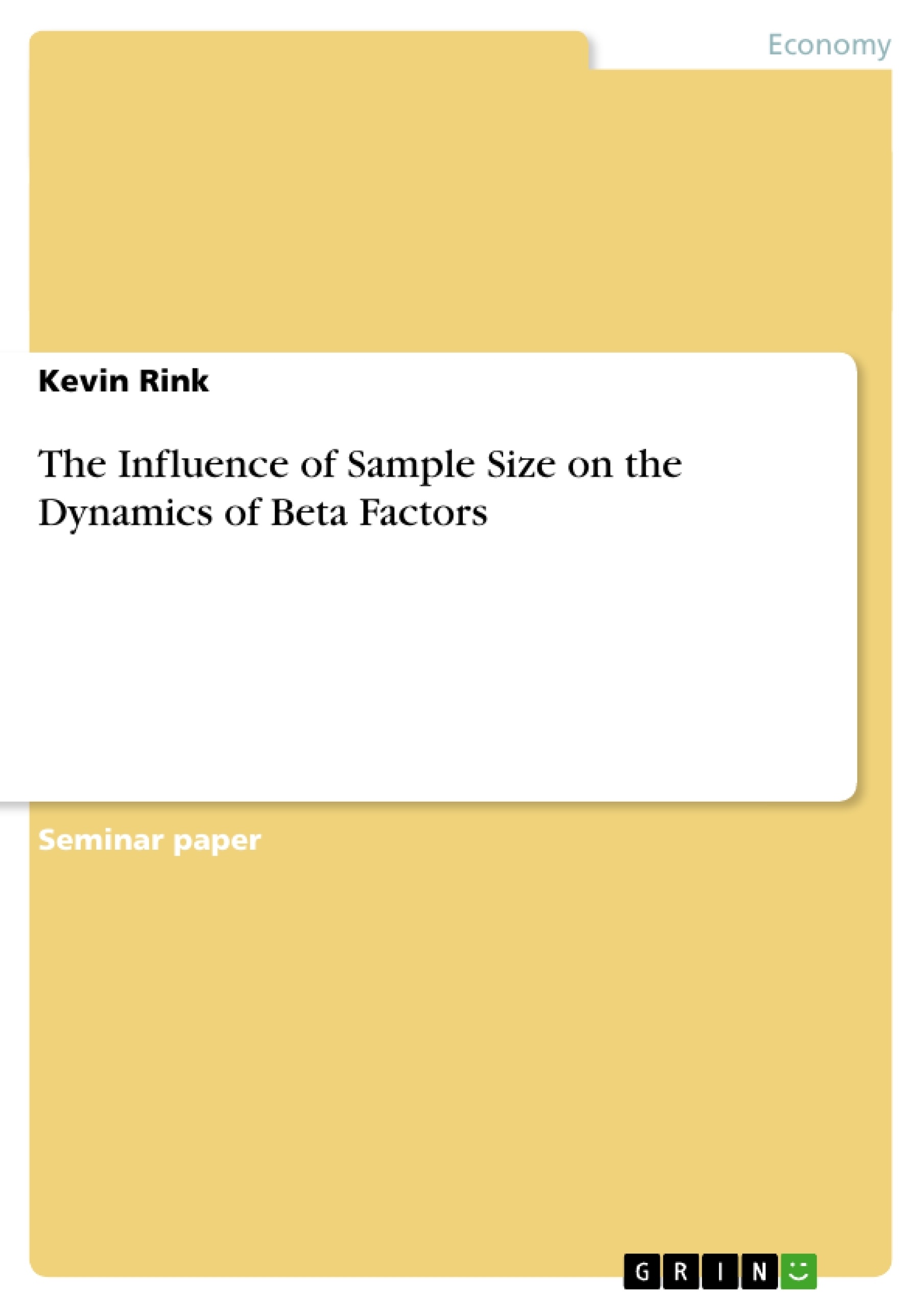The capital asset pricing model (CAPM) was introduced by William Sharpe, John Lintner, and Jan Mossin in the 1960s on the basis of Harry Markowitz’s achievements in the field of portfolio theory. Since then, the CAPM has been one of the most widely used models for evaluating the price of portfolio assets. A major element of the CAPM is the beta factor. The beta factor measures how the expected return of a stock or a portfolio correlates with the return of the whole market.
(...) Obviously, the fluctuation of a stock does affect beta factors. As the value of beta is decisive for the portfolio selection process, it is necessary to provide the CAPM with a beta that represents the best possible estimate of correlation with the market. On account of this, the calculation of beta factors is complex as betas will vary over time. In addition, sample size variation can cause change within the beta.
(...) The aim of this seminar paper is to show the influence of the sample size on the beta factor. Furthermore, it shall attempt to define the determinants of an ideal sample size.
Inhaltsverzeichnis (Table of Contents)
- Introduction
- Problem Definition and Objectives
- Course of the Investigation
- Conceptual Framework
- The Capital Asset Pricing Model
- Determining Beta Factors through Least Squares Regression
- Beta Factor Regression
- Influence of the Sample Size on the Beta Regression
- The Commerzbank Stock
- The Sample Size of 250 Days
- Beta Regressions with Samples Sizes up to one Month
- Beta Regressions with Sample Sizes between three Months and less than one Year
- Beta Regressions with Sample Sizes of two Years and above
- Optimal Sample Size
- Influence of the Sample Size on the Beta Regression
- Conclusion
Zielsetzung und Themenschwerpunkte (Objectives and Key Themes)
This seminar paper aims to investigate the impact of sample size on the beta factor within the context of the Capital Asset Pricing Model (CAPM). It explores the relationship between sample size and beta factor variation, aiming to define an ideal sample size for accurate beta estimation. The key themes explored in the paper are:- The influence of sample size on beta factor calculations.
- The application of the CAPM and beta factor estimation.
- The significance of accurate beta calculation for portfolio selection.
- The analysis of beta factor dynamics over time.
- The identification of an optimal sample size for beta factor calculations.
Zusammenfassung der Kapitel (Chapter Summaries)
The first chapter introduces the problem definition and objectives of the seminar paper. It outlines the significance of the CAPM and the beta factor in portfolio evaluation, highlighting the challenges associated with accurately calculating beta due to market fluctuations and sample size variations. Chapter two delves into the conceptual framework, explaining the CAPM and its relationship to beta factor calculation. It presents the theoretical and mathematical derivation of beta factor determination through ordinary least squares (OLS) regressions. Chapter three examines the influence of sample size on beta factor regression. It uses the Commerzbank stock as a case study, performing beta calculations with varying sample sizes to analyze the impact on beta factor values. The chapter explores different sample sizes, ranging from daily returns to multi-year periods, to understand the dynamics of beta over time.Schlüsselwörter (Keywords)
The primary keywords and focus topics of this seminar paper include: Capital Asset Pricing Model (CAPM), beta factor, sample size, OLS regression, portfolio selection, risk measurement, market fluctuations, stock returns, Commerzbank, optimal sample size, and financial modeling.- Citation du texte
- Kevin Rink (Auteur), 2008, The Influence of Sample Size on the Dynamics of Beta Factors, Munich, GRIN Verlag, https://www.grin.com/document/147114



